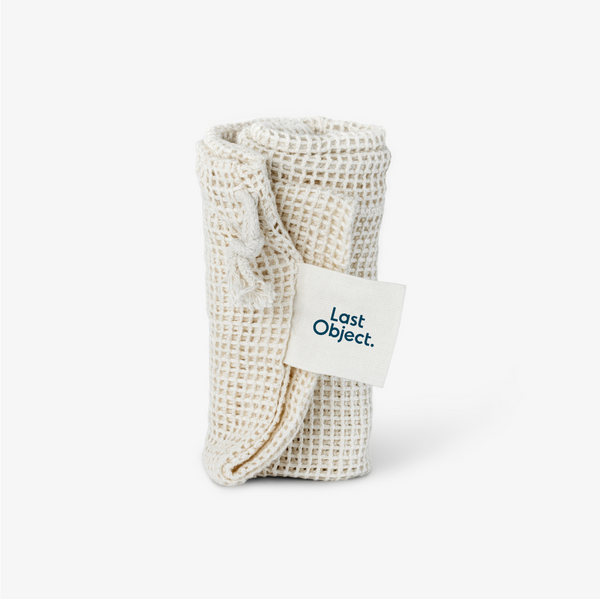Plastic Recycling Symbols
18 octobre 2021Most plastic goods are stamped with the recycling symbol that features three arrows forming the shape of a triangle. Inside the triangle, there will be a number between 1 and 7 known as the resin code. This code indicates the type of plastic, and thus how recyclable the item is.
Let’s take a look at each plastic type along with the respective resin codes.

Polyethylene Terephthalate (PET or PETE) - Resin Code: 1
PET is one of the most common plastics in circulation. It is used to make many popularly consumed single-use plastic items. Polyethylene terephthalate is actually also one of the easiest to recycle. Because of this, you can safely place these items in your recycling bin for collection.
Used As:
Soda bottles, yogurt pudding pots, peanut butter pots, mouthwash bottles, and ketchup bottles.
Gets Recycled Into:
Milk jugs, juice bottles, bleach bottles, detergent containers, shampoo bottles, and butter tubs.
High Density Polyethylene (HDPE) - Resin Code: 2
HDPE is another product that is both prevalent and easily recycled. It is commonly used as a container and as packaging. Similarly to PET, most HDPE items are accepted by curbside recycling collections. However, there are some items that may be excluded, such as grocery bags. Check which items are accepted by your local recycling system.
Used As:
Milk jugs, juice bottles, bleach bottles, oil bottles, shampoo bottles, bags, and butter tubs.
Gets Recycled Into:
Pens, plastic lumber, plastic fencing, picnic tables, floor tiles, and drainage piping.
Polyvinyl Chloride (PVC) – Resin Code: 3
PVC is a resilient material that’s capable of withstanding relatively severe conditions. Accordingly, it is often used for construction materials such as piping. Its inexpensive nature means that it is also frequently used as packaging.
Most recycling plants do not accept PVC items. As a result of this, you shouldn’t place these products in your recycling bin. However, certain specialist organizations, such as plastic lumber producers, will recycle it. PVC includes chlorine, a harmful substance that leaches out throughout its lifecycle. This means that you should avoid repurposing it yourself. In particular, never use this as a food container. What’s more, don’t burn your used PVC items because the material produces noxious and harmful chemicals when incinerated.
Used As:
Shampoo and conditioner bottles, furniture, toys, cooking oil bottles, and piping.
Gets Recycled Into:
Specialized recycling programs transform PVC into certain construction materials. These include paneling, decks, flooring, paneling, and roadway gutter.
Low Density Polyethylene (LDPE) – Resin Code: 4
Used As:
Shopping bags, frozen food bags, bread bags, and squeeze bottles.
Gets Recycled Into:
Plastic lumber, compost bins, garbage can liners and floor tiles, and paneling.
Polypropylene (PP) – Resin Code: 5
One of PP’s best qualities is its resistance to heat. As a result of its high melting point, PP is commonly used as a hot liquid container. Similarly to LDPE, more recycling centers are starting to accept PP but there are still those that don’t. As such, also check with your local authority to find out which PP items, if any, they accept before adding them to your recycling.
Used As:
Packing tape, plastic straws, yogurt tubs, syrup containers, and plastic picnic products.
Gets Recycled Into:
Food containers, industrial fibers, trays, bins, compost bins, and battery cables.
Polystyrene (PS) - Resin Code: 6
Used As:
Packing material, single-use plates and cups, food trays, egg cartons, and takeaway containers.
Gets Recycled Into:
Insulation, egg cartons, packing material, and takeaway containers.
Miscellaneous - Resin Code: 7
Some category 7 plastics can occasionally be recycled but you will need to check with your local authority for each individual item.
Used As:
Large water bottles, sunglasses, signs, DVDs, cases for smaller electronic goods, and food containers.
Gets Recycled Into:
Plastic lumber and certain tailor-made products.
Ensure You Recycle Correctly
Recycling is only effective if it is done correctly! The whole system falls apart if people don’t do it the right way. There are three main steps you must follow, as outlined below.
1. Rinse Dirty Plastics Out With Water
Make sure any food or drink residue has been removed. Otherwise, this contamination can reduce the quality of the recycling.
2. Dry Out The Plastic
Once rinsed, dry out the plastic. Liquids can also interfere with the recycling process.
3. Don’t Bag Recyclables
Plastics that are bagged may not be recycled. Instead, keep your plastics loose for recycling and reuse plastic bags.

Plastic Recycling Numbers Explained
With a better understanding of recycling numbers, you can now sort your plastics correctly for recycling. The more people who know what plastics can be recycled and which ones can’t, helps to improve the recycling system as a whole. In addition to this, you can now shop with recyclability in mind. Avoiding plastics that can’t be recycled where possible, can force businesses to limit the production of these harmful materials. As such, it could go a long way towards successfully fighting the environmental devastation that plastic continues to wreak on the planet.
MORE Sustainability 101 ARTICLES View all ›
Ready to make
the switch?
- Powerful Cleaning
- Dissolves Easily
- Skin-Friendly
- Eco-Friendly
- No Mess















